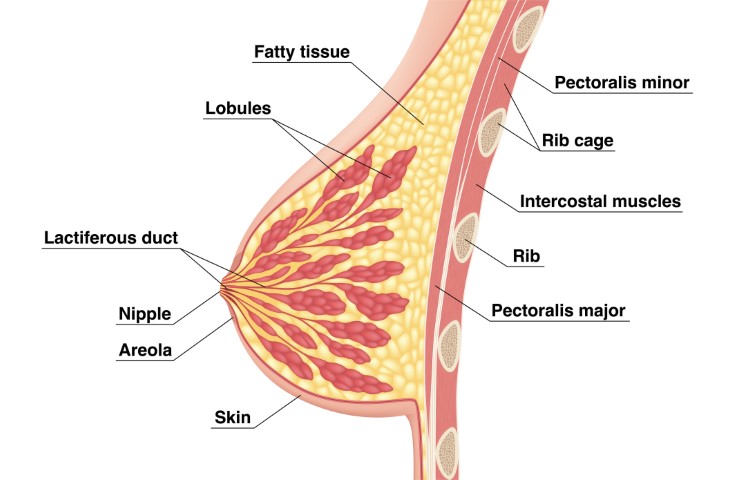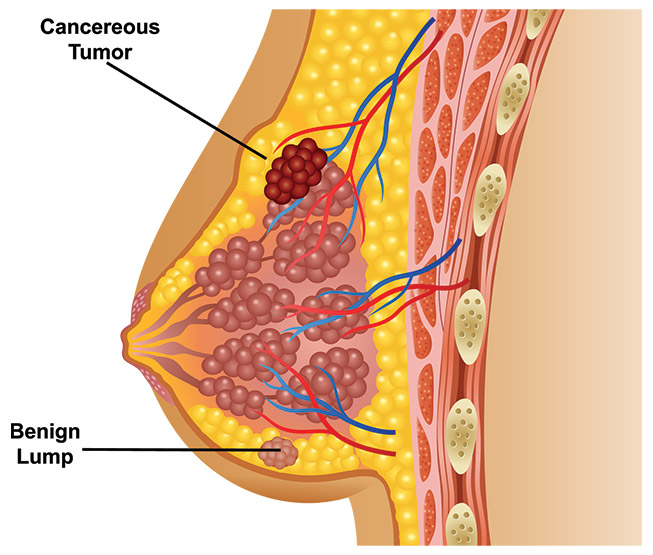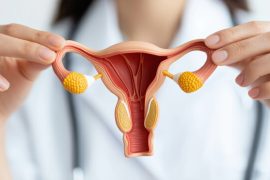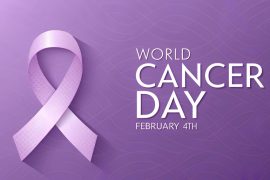Cancer is usually caused due to the mutations that take place in the genes that regulate cell growth, leading the cells to divide and multiply uncontrollably. Breast cancer, as the name itself suggests, develops in the breast cells. As per reports, the number of cases of breast cancer in India is on the rise. More than 50% of Indian women suffer from stage 3 or stage 4 breast cancer. Thus, survival becomes difficult at later stages. But the good news is that we can come together and make people aware of the symptoms and help them take precautions about the same. But first, let us understand what breast cancer is.
In breast cancer, usually, the tumors are formed in the ducts or the lobules of the breast. These cancerous cells invade the other healthy tissues and travel to the lymph nodes, leading to the spread of tumors to the other parts of the body.



There are several types of breast cancer but are mainly classified into two categories; “invasive” and “non-invasive”. Invasive breast cancer spreads from the breast cells to other glands and parts of the body, while non-invasive breast cancer does not spread. The different types of breast cancer are as follows:
- Ductal Carcinoma in Situ (DCIS): This type of breast cancer is non-invasive. In this condition, the cancerous cells are confined to the ducts in the breasts and have not spread to the nearby cells and tissues.
- Lobular Carcinoma in Situ (LCIS): This cancer grows in the lobules of the breast. Lobules are the milk-producing glands in the breast. This condition is also non-invasive and does not spread to the nearby tissues
- Invasive Ductal Carcinoma (IDC): This the most common type of breast cancer found in people. It develops in the ducts (tube-like structures that carry milk to the nipples) and invades the nearby tissues.
- Invasive Lobular Carcinoma (ILC): Like IDC, this type of breast cancer is also invasive. It develops in the lobules of the breast and spreads to the nearby tissues.



The Symptoms of Breast Cancer may not be visible at an early stage. Because, at an early stage, a tumor might be too small to be felt. Different types of breast cancer have different symptoms, but the most common symptoms of breast cancer are:
- A lump or thickening in the breast
- Pain in the breast
- Red, pitted skin over the breast
- Peeling or crusting of the pigmented skin around the nipple area
- A fluid discharge from the nipple apart from breast milk
- Discharge of blood from the nipple
- A sudden change in the shape or size of the breast
- Inverted nipple
How can one detect breast cancer at an early stage?
Certain symptoms can either be caused by breast cancer or a benign breast condition. To determine if it is breast cancer, you may have to undergo diagnostic tests along with a physical examination of the breast. Some tests that can help diagnose breast cancer are:
Breast Examination: This doctor will physically examine your breast and the lymph nodes in your armpits to detect any signs of breast cancer.
Mammography: This is the most common test that is used to diagnose breast cancer. A mammogram refers to the x-ray of the breast. It is advisable for women of age 40 and above to have an annual mammography screening.
Breast Ultrasound: An ultrasound uses sound waves to create an image of the tissues located deep in the breast. An ultrasound can also help distinguish between a tumor and a benign cyst.
Breast Biopsy: A biopsy is one of the most definitive ways to diagnose breast cancer. A sample of your breast tissues will be removed for testing.
What are the immediate measures one can take after being diagnosed with breast cancer?
Knowing that you’ve been diagnosed with breast cancer can be extremely overwhelming. Your next question might probably be “What now?” Here are a few immediate measures that you can take after you’ve been diagnosed with breast cancer.
Understand your diagnosis: While the term Breast Cancer is easy enough to understand, there different types that require different treatment. Talk to your doctor and understand the type of tumor, the cancer stage, and how much it has spread. This will help you in further research and also in making an informed decision.
Decide how much you want to know: Though most cancer patients would like to know everything about their condition and the exact chances of survival, some don’t. If you do not prefer to know all the details, you can let your doctor know. You can also seek the help of a trusted family member or a friend to come along with you to the consultation for support.
Explore your treatment options: Depending on the type and stage of cancer, there are various treatment options for you to consider. You can do your research and make your own decisions on the treatment or you can leave it to your doctor to suggest the right treatment for you.
Analyze the risks and benefits involved in the treatment: After understanding your treatment options, it is very important to weigh the pros and cons of each treatment option before you finalize one. You must consider parameters such as side effects and financial costs. You must also consider how treatment might affect your everyday life and take the necessary steps.
Although the cases of breast cancer have been increasing in women, there is always a way to prevent it. Keeping your eyes open for minor symptoms, sharing all the credible knowledge with your loved ones, and building a strong immune system are some of the measures that can be taken into consideration. Last but not the least, having a positive outlook can do wonders!




